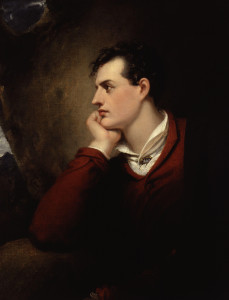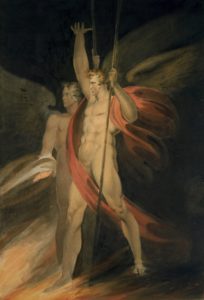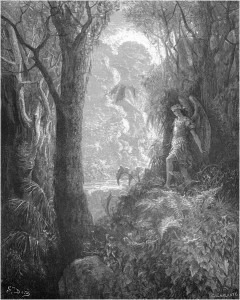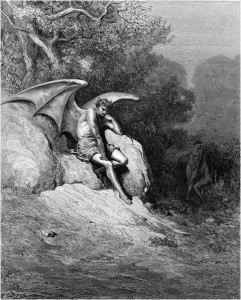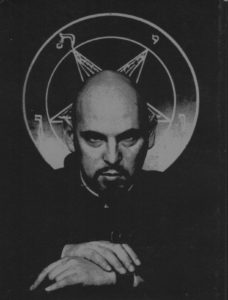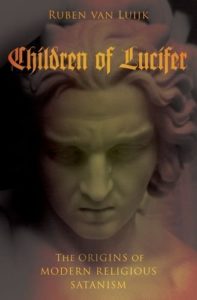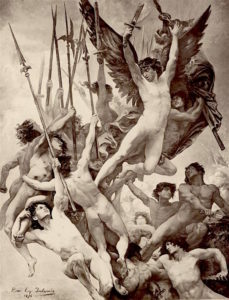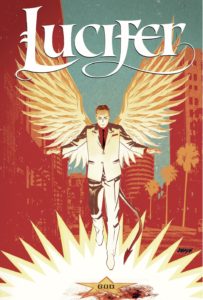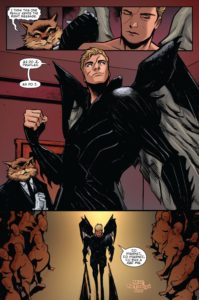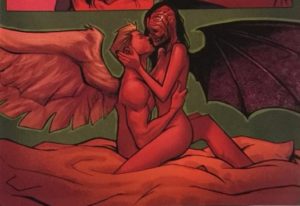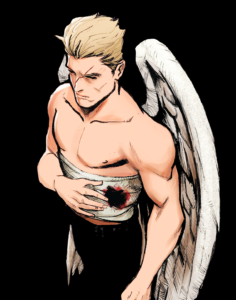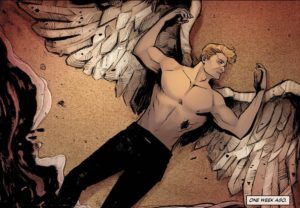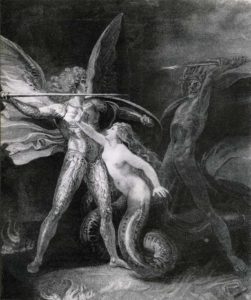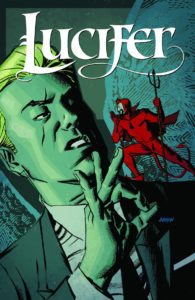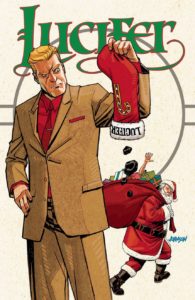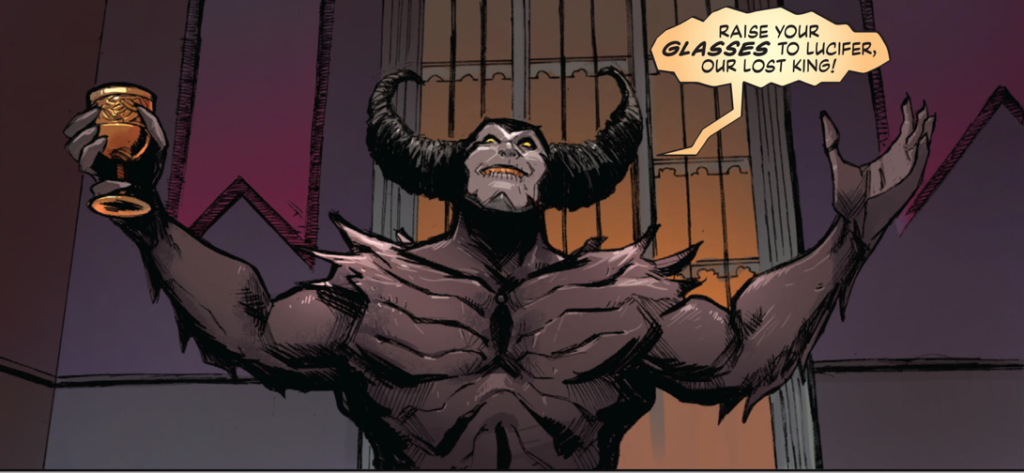“…Milton’s Satan assumes in the Romantic era a prominence seen never before or since, nearly rivaling Prometheus as the most characteristic mythic figure of the age. A more active and ambiguous mythic agent than the bound, suffering forethinker and benefactor of humanity, the reimagined figure of Milton’s Satan embodied for the age the apotheosis of human desire and power.”1
— Peter A. Schock, Romantic Satanism (2003)
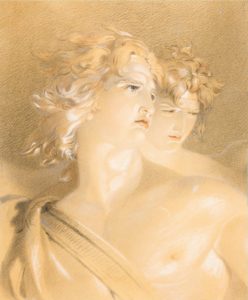
Satan was not so prominent before Romantic Satanism, to be sure, but modern-day, self-declared Satanists would surely take issue with the idea that Satan has not been so prominent since. Yet an honest comparison of Romantic Satanism on the one hand and modern organized Satanism on the other makes it difficult indeed to disagree with Schock’s assertion. The bestial Satan of LaVeyan Satanism and its offshoots pales in comparison to the titanic Lucifer of Romantic Satanism. While both are symbols or icons of fundamentally human drives, the former is all-too-human—concerned as LaVeyan Satanism is with “man as just another animal”2—whereas the latter is emblematic of the more lofty human drive for transcendence, which differentiates us from our fellow beasts of the field (or so at least the Romantics believed3). In any event, the fallen angel was raised to an unprecedented height by Milton and the Romantic Satanists the poet inspired, and as organizational Satanists have chosen not to embrace but rather distance themselves from this marvelous tradition, the real Satanic trailblazing has been carried out by those contemporary creative individuals who have summoned the sympathetic and sublime Satan of Miltonic-Romantic Satanism in their works, thereby ushering in a movement of neo-Romantic Satanism today.
The Romantics: Satanists in All But Name?
What’s in a name? To downplay the monumental significance of the Romantic Satanism phenomenon simply because those involved did not self-identify as “Satanists” is to be overly focused on semantics. If the Romantic Satanists did not term themselves “Satanists,” neither did they term themselves “Romantics,” as that label was applied retrospectively. This of course does not diminish the historical significance of those under the “Romanticism” umbrella: a wide array of creative individuals caught up in a similar current and preoccupied by similar issues, such as revolution, liberty, the sublime, the cult of genius, and so on. Likewise, the Romantic Satanists having been termed “Romantic Satanists” in retrospect does not diminish the fact that they were caught up in a similar current of overall positive reappraisal and implementation of the Miltonic Satan—caught up in “Satan’s cult of himself,”4 as it were.
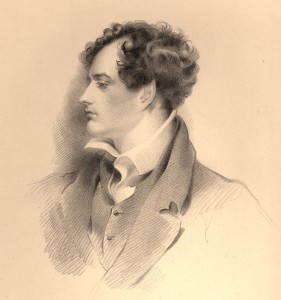
Certainly worth noting is that while the “Romantic” label was applied to the Romantics retrospectively, the “Satanic” label was bandied about during the heyday of Romantic Satanism. Mario Praz may have rechristened Lord Byron “the Satanic Lord”5 in 1933, but the poet’s contemporaries themselves considered “Byronic” interchangeable with “Satanic.” In 1820, the English clergyman Reginald Heber identified in Byron “a strange predilection for the worser half of manicheism,” accusing the wayward peer of having “devoted himself and his genius to the adornment and extension of evil.”6 This, “being interpreted,” reflected Byron himself, “means that I worship the devil…”7 In the following year, the Poet Laureate Robert Southey condemned Byron as the orchestrator of a “Satanic School…characterised by a Satanic spirit of pride and audacious impiety…”8 This condemnation was “the official birth certificate of the Satanic School of Poetry,” as Ruben van Luijk aptly puts it in his scholarly tome Children of Lucifer: The Origins of Modern Religious Satanism, “the original source for the designation ‘Romantic Satanism’ or ‘Literary Satanism,’ still used by scholars of literature today.”9 Simply because Byron ostensibly dismissed the Satanic branding10 and mocked the self-satisfied Southey by turning the accusation back around11 does not alter the fact that Byron indeed spearheaded the Satanic strand of Romanticism. Byron’s bad eminence was manifestly exhibited in his decision to “give…Mr. Southey – & others of the crew something that shall occupy their dreams!”12 by penning Cain (1821), wherein a Miltonic Lucifer emerges as a noble, even Promethean opponent of “the Omnipotent tyrant” (I.i.138), urging Adam’s firstborn son to defy the “tyrannous threats to force you into faith / ’Gainst all external sense and inward feeling…” (II.ii.461–62).

There is arguably a better example than “the Satanic Lord” of someone on the border of Satanism proper in the person of Robert Burns, Scottish Poet Laureate and a proto-Romantic figure. “Robert Burns makes several brief references to Satan in letters written in 1787 and 1788,” notes John Leonard in his two-volume Faithful Labourers, which masterfully traces the reception history of Milton’s Satan, from the seventeenth century to contemporary criticism. While Burns’ “tone is hard to pin down,” Leonard observes, “it is clear that he feels sympathy for the Devil.”13 Most significantly, Burns employs Milton’s Satan as a vehicle for self-assertion, holding up the figure of the fallen angel as an exemplar of dauntless defiance in the face of personal adversity: “I know what I may expect from the world, by and by; illiberal abuse and perhaps contemptuous neglect: but I am resolved to study the sentiments of a very respectable Personage, Milton’s Satan—‘Hail horrors! Hail, infernal world!’ ”14 Romanticism scholar Fiona Stafford notes that Burns, not insignificantly, expressed this Satanic sentiment as he alternately dismissed the powerful and their reservations about him: “I set as little by kings, lords, clergy, critics, &c as all these respectable Gentry do by my Bardship.”15 Thus, as Stafford states, Burns’ “admiration of Milton had a political as well as personal significance,” for
To celebrate Satan in the same breath as dismissing those at the top of the contemporary social hierarchy was to reveal the same kind of response to Paradise Lost as that of Blake, Godwin, Byron or Shelley. For Burns as for his radical heirs, Milton’s Satan was the champion of the oppressed and the eloquent opponent of tyranny.16
“Give me a spirit like my favourite hero, Milton’s Satan,” Burns would declare, and he was inclined to keep that dark hero close by so as to continually rekindle the Satanic spirit within himself: “I have bought a pocket Milton which I carry perpetually about with me, in order to study the sentiments—the dauntless magnanimity; the intrepid, unyielding independence; the desperate daring, and noble defiance of hardship, in that great Personage, Satan.”17
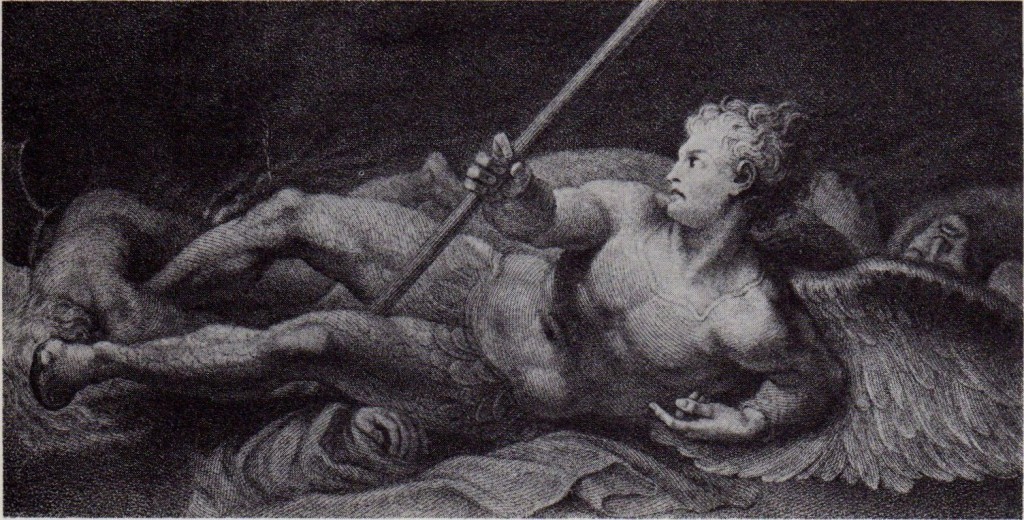
Burns was compelled to calm certain brows he had raised due to the diabolical defiance on his own, but when he qualified his admiration for the Satan of Paradise Lost, Burns’ passion for the Satanic sublime burst through: “My favourite feature in Milton’s Satan is, his manly fortitude in supporting what cannot be remedied—in short, the wild broken fragments of a noble, exalted mind in ruins.—I meant no more by saying he was a favourite hero of mine.”18 To mean no more is to mean quite a lot. If enthusiastically embracing Satan as a mythic/poetic figure to cultivate that character’s very own heroically defiant spirit within oneself does not constitute genuine Satanism, I don’t know what does. In his professed admiration for Milton’s Satan and his inclination to emulate that “very respectable Personage,” Burns very much anticipated Romantic Satanism, which deserves the recognition of “real Satanists.”
Romantic Satanism was responsible for restoring a great deal of the tarnished Lucifer’s luster, and it is undeniable that a vast majority of organizational Satanists have paid this grand and groundbreaking movement little more than lip service. However, while contemporary Satanic circles may have missed the Miltonic-Romantic mark with regards to Satan and the Promethean values which the celestial rebel signifies, the twenty-first century has witnessed a cultural resurgence of the spirit of Romantic Satanism. The Miltonic-Romantic Lucifer has reared his refulgent head in the artistic mediums of today, and this nascent neo-Romantic Satanism—a burgeoning phenomenon signifying the influence of Romantic Satanism on our milieu, from faint echoes to modern-day manifestations of its distinguished Devil in the arts and culture at large—appears to be returning Satanism to its Miltonic-Romantic roots. The fallen archangel’s lost grandness may be returned yet.
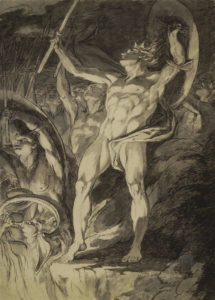
Much like Romantic Satanism, today’s cultural current of neo-Romantic Satanism is not organizational but organic or “in the air,” and the creative individuals who are its contributors, much like the Romantic Satanists themselves, most likely wouldn’t describe themselves as “Satanists”—let alone officially join some Satanic group—or even recognize that they are part of a broader movement giving the Devil a much needed makeover. What does it matter? If self-identifying as a Satanist were really all that key, then over the past five decades organized Satanism has existed “real Satanists” would have written remarkable Satanic literature or even lyrics which put the poetry of Milton’s Paradise Lost and Byron’s Cain to shame, and “real Satanists” would have created artwork much more magnificent than James Barry or Henry Fuseli. Needless to say, this has not been the case. Milton was as pious a man as one could imagine, yet the Puritan poet effectively created a Satanic epic with Paradise Lost; Lord Byron was dismissive of the Satanism brand imposed upon him by his reactionary contemporaries, yet he lived a scandalously Satanic lifestyle, peppered his poetry with grandly Satanic characters, and with Cain crafted Romantic Satanism’s literary apex; Barry was a Roman Catholic and Fuseli an ordained Zwinglian minister, yet these artists created some of the most sublime Satanic iconography in history. Belonging to the Devil’s party is far more important than knowing it,19 and so while today’s “neo-Romantic Satanists,” as noted above, may not self-identify as Satanists, they are proving to be far more significant than organizational Satanists in terms of continuing the Miltonic-Romantic tradition of the laudable Lucifer. Unsurprisingly, these writers and artists I categorize as “neo-Romantic Satanists” often profess to have drawn inspiration from Milton’s Paradise Lost and its Romantic admirers, as opposed to anything organized Satanism has produced over its half-century span. Judging by the fruits, Satanic organizations would do well to return Satanism to its Miltonic-Romantic roots.
Of course, the examples of neo-Romantic Satanism which The Satanic Scholar helps to highlight—Vertigo’s Lucifer comic, Legendary Pictures’ Paradise Lost film, New Atheism’s half-joking sympathy for Satan, and the increasingly frequent usage of Miltonic-Romantic-Satanic imagery and references in the arts, broadly speaking—are not the equivalent of the cultural treasures that are Milton’s epic poem Paradise Lost and the Romantic works inspired by that masterpiece of English literature. Then again, poets are no longer the “legislators of the World”—unacknowledged or otherwise—that they were in Shelley’s nineteenth-century vision,20 and the above examples are sure to prove far more effective in moving the collective conscious today. Romantic Satanism was undeniably the most significant historical reevaluation of Satan, and this neo-Romantic Satanism may have similar far-reaching effects, perhaps the likes of which have never been seen. We may be living in a time in which the fallen angel is not only restored to his former Romantic prominence but perhaps exalted to even greater glory than ever before. In any case, one thing is certain: if this day and age truly is the fallen Morningstar’s time to shine, it will have been realized not by “real Satanists” but those who, like Milton and arguably many of the Romantic Satanists, are “of the Devil’s party without knowing it”—a telling reminder just why Romanticism was far more Satanic than Satanism.
Notes
1. Peter A. Schock, Romantic Satanism: Myth and the Historical Moment in Blake, Shelley, and Byron (New York: Palgrave Macmillan, 2003), p. 3.↩
2. LaVeyan Satanism’s overemphasis on the animalistic nature of Man is enshrined in the seventh of “The Nine Satanic Statements,” which serve as the philosophical foundation for the Church of Satan: “Satan represents man as just another animal, sometimes better, more often worse than those that walk on all-fours, who, because of his ‘divine spiritual and intellectual development,’ has become the most vicious animal of all!” Anton Szandor LaVey, The Satanic Bible, intro. Peter H. Gilmore (New York: Avon Books, [1969] 2005), p. 25.↩
3. See Ruben van Luijk, Children of Lucifer: The Origins of Modern Religious Satanism (New York: Oxford University Press, 2016), p. 115.↩
4. Schock, p. 39.↩
5. Mario Praz, The Romantic Agony, trans. Angus Davidson (Cleveland and New York: The World Publishing Company, [1933] 1963), p. 81.↩
6. Quoted in Schock, p. 101.↩
7. Quoted in ibid., p. 190n. 48.↩
8. Robert Southey, Preface to A Vision of Judgement (1821), quoted in C. L. Cline, “Byron and Southey: A Suppressed Rejoinder,” Keats-Shelley Journal, Vol. 3 (Winter, 1954), p. 30.↩
9. Van Luijk, p. 73.↩
10. “…[W]hat is the ‘Satanic School?’ who are the Scholars?.…I have no school nor Scholars…” Lord Byron, quoted in Cline, p. 35.↩
11. “If there exists anywhere, excepting in his imagination, such a school, is he not sufficiently armed against it by his own intense vanity?” Lord Byron, Preface to The Vision of Judgment (1822), in Lord Byron: The Major Works, ed. Jerome J. McGann (New York: Oxford University Press Inc., [1986] 2008), p. 939.↩
12. Quoted in Schock, p. 101.↩
13. John Leonard, Faithful Labourers: A Reception History of Paradise Lost, 1667–1970: Volume II: Interpretative Issues (Oxford: Oxford University Press, 2013), p. 409.↩
14. Quoted in ibid.↩
15. Quoted in Fiona Stafford, “Burns and Romantic Writing,” in The Edinburgh Companion to Robert Burns, ed. Gerard Carruthers (Edinburgh: Edinburgh University Press Ltd., 2009), p. 105.↩
16. Stafford, p. 105.↩
17. Quoted in Leonard, p. 410.↩
18. Quoted in ibid.↩
19. William Blake, in The Marriage of Heaven and Hell (1790–93), famously theorized that “The reason Milton wrote in fetters when he wrote of Angels & God, and at liberty when of Devils & Hell, is because he was a true Poet and of the Devils party without knowing it[.]” The Complete Poetry and Prose of William Blake, ed. David V. Erdman, rev. ed. (New York: Anchor Books, [1965] 1988), p. 35; pl. 6.↩
20. Percy Bysshe Shelley, A Defence of Poetry (1821), in Shelley’s Poetry and Prose, ed. Donald H. Reiman and Neil Fraistat (New York [2d rev. ed. 1977]: W. W. Norton & Company, Inc., 2002), p. 535.↩
